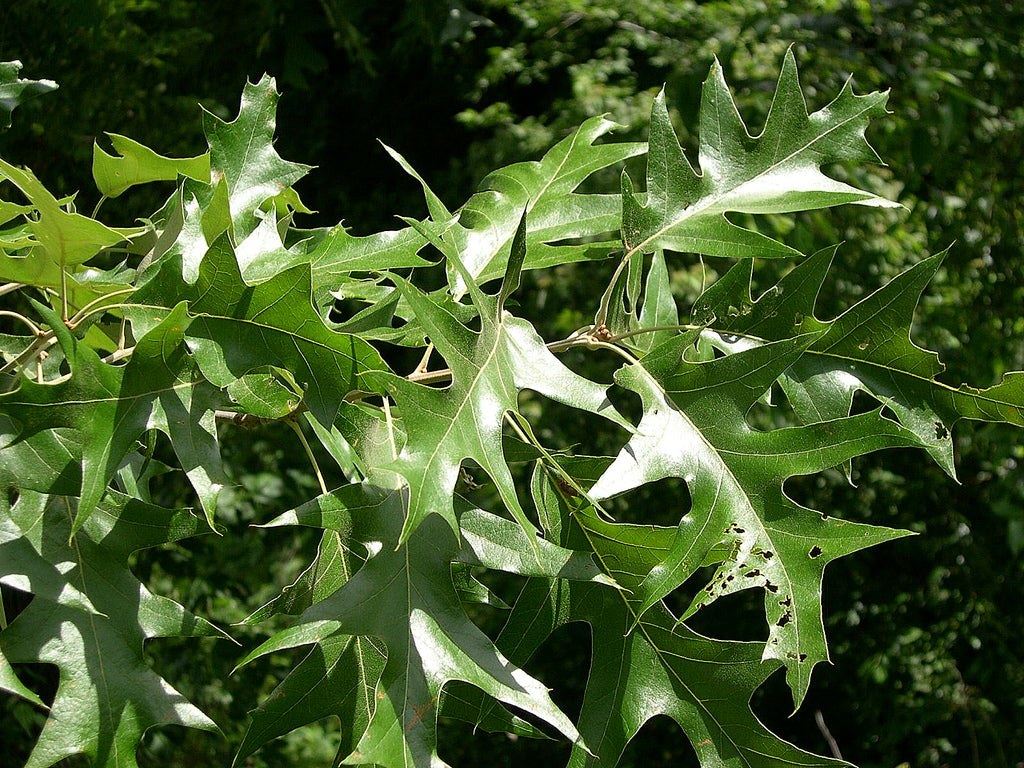Bareroot Plant Material
Black Oak
Black Oak
Couldn't load pickup availability
25 plants per unit
Quercus velutina, or Black oak, is native to Kansas. Black oak reaches 50 to 60 feet in height. It has an open crown and tall, straight trunk.It is commonly considered slow growing, however, on a fertile site with adequate moisture, after a couple of years establishing its roots, it can grow two to three feet a year. It's extensive tap root makes is tolerant to some drought.
Leaves, Stems, and Fruit
The leaves are simple and alternately arranged on the twigs. They are 5 to 10 inches long and 3 to 8 inches wide with the broadest portion toward the middle of the leaf. Usually, there are 5 to 7 bristle-tipped lobes separated by deep indentations with the top surface being darker green than the fuzzy underside. Young twigs are reddish brown and hairy but smooth with age. Flowers appear in April or May with both male and female flowers borne on the same tree. Fruit is a reddish-brown oval shaped acorn enclosed 1/2 or more by a large fringed cup. The bark of older trees is dark and rough.
Use
Windbreaks - Because of its large size and long-lived qualities, black oak is an excellent choice in a multi-row windbreak. It is, however, relatively slow-growing and does not tolerate shaded conditions, therefore, it should not be planted adjacent to fast-growing species which might over top it without adequate space between species.
Timber - Black oak is produces state for rough lumber products. The wood is heavy, hard, strong and durable. Some uses include flooring, pallets, railroad ties and bridge timbers.
Wildllife - Acorns constitute a good staple food for a variety of birds and animals. Woodpeckers, jays, flickers, squirrels, whitetail deer and gamebirds such as wild turkey and wood duck are important species that consume the acorns.
Adaptation and Soil
Black oak is native statewide and grows best on deep fertile, well-drained soils but will grow on many types of upland and bottomland soils.
Spacing
It is normally spaced 10 to 18 feet within the row. Space the rows 20 to 24 feet from adjacent trees or shrubs to prevent the oak from over-growing smaller plants or to prevent fast growing plants from over-growing the oak. In a timber planting, bur oak can be planted in 10 x 10 feet to 15 x 15 feet spacing.
Culture
One-year-old, bare-root seedlings, 12 to 18 inches tall are used in plantings. Survival is generally good. Initial growth is centered around root development. Two to three years after planting, top growth should average 8 to 12 inches annually with good weed and grass control; growth may reach 40 inches annually with adequate moisture.
Pests
Black oak is very hearty and disease resistant. Few known major insect or disease problems exist.





